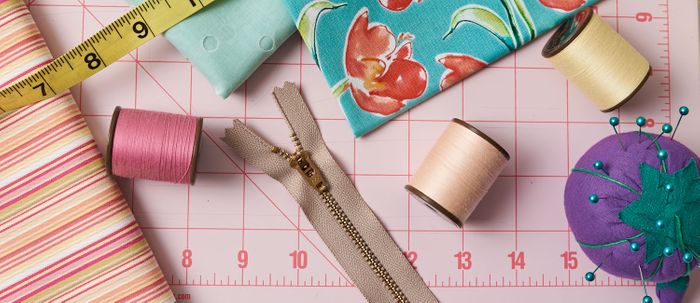
Learn about the anatomy of the sewing-machine needle, and find out how to choose the right one for your project. Threads Contributing Editor Judith Neukam tells you how the different parts of the needle work. Understanding these parts helps you match the needle type to the fabric and thread you’re using.
For most woven fabrics and regular construction thread, a universal-point needle is appropriate. Jersey or ballpoint needles are best for stretch knits, and help prevent skipped stitches. For heavy, dense wovens, try jeans/denim needles in a larger size. Microtex needles are extrasharp and help you get good results on tightly woven fabrics with fine yarns.
When selecting a needle, choose the size and point style to suit the fabric; choose an eye shape appropriate to the thread.
Teach Yourself to Sew
Garment sewing expert Judith Neukam got her first taste of sewing when she took the free lessons that came with her mother’s sewing machine purchase. Judith was 9 at the time. Soon after, she was sewing her own clothes and feeding her passion for the craft. In her Teach Yourself to Sew series, Judith shares her enduring love of sewing and her invaluable years of sewing experience.
Getting started
She starts with discussing the equipment and the essential sewing notions for anyone who sews. You’ll learn about shopping for fabrics, choosing patterns (including selecting the correct size), and planning the perfect pattern layout. From machine-sewing simple seams to inserting zippers and stitching buttonholes, Judith demonstrates the key steps to making a custom garment.
Discover methods for clean-finishing seam allowances and applying facings so all edges are neat. To add shape to garments, Judith explains how and why to sew darts, and how to gather fabric for volume. Other garment elements, such as sleeves, pockets, and elasticized waistbands, are shown in easy-to-follow video tutorials.
Advancing your skills
When you’re ready to challenge yourself further, tune in to Judith’s overview of couture garments and sewing techniques. Even if you never intend to become the next Coco Chanel, you’ll learn methods that add quality to your everyday wardrobe. Find out how to perfectly match stripes, plaids, and prints; baste seams; and insert underlinings and linings.
Finally, Judith shares the basics of pattern fitting and adjustment. Her method begins at the shoulders, ensuring the garment hangs properly. Follow along as Judith shows how to create a shoulder template that you can use again and again to adjust patterns before cutting the fabric. As a bonus, you’ll even learn how to create a custom dress form so you can fit garments on a body that truly represents your true body shape.






Log in or create an account to post a comment.
Sign up Log in